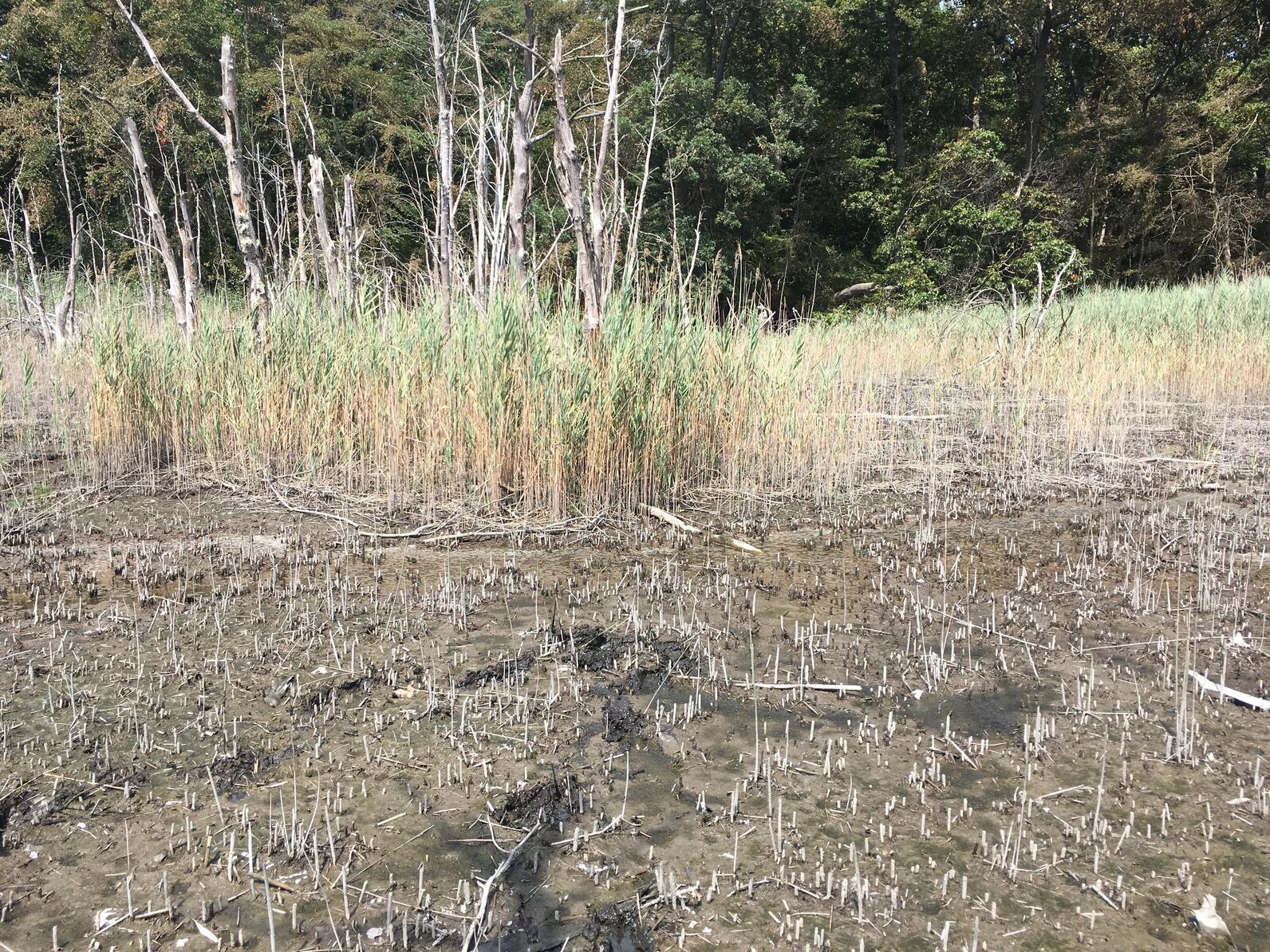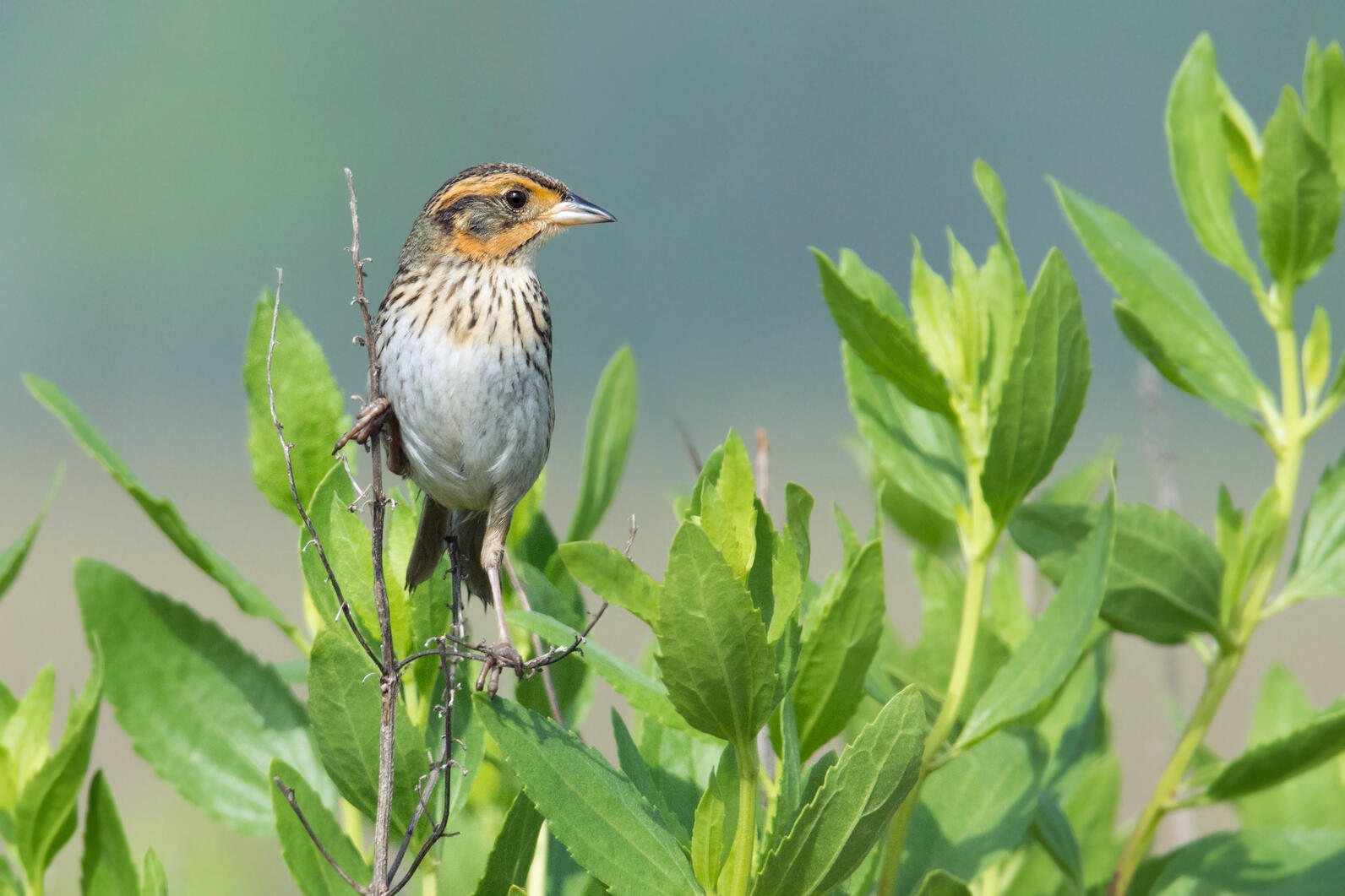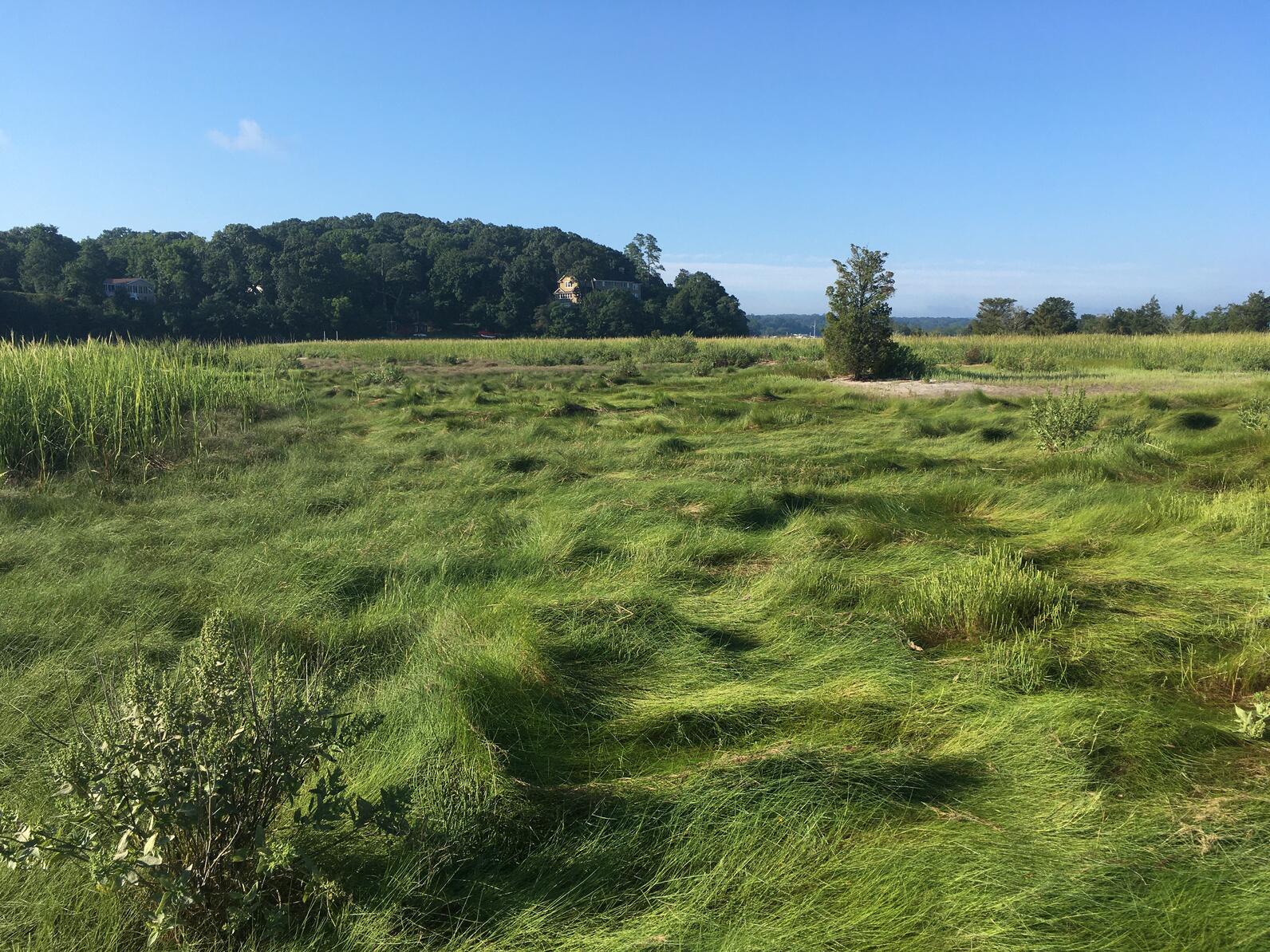On a hot, sunny day in mid-July 2020, the Audubon Connecticut and Audubon New York coastal resilience teams weaved their way through a large patch of nine foot-tall, invasive Phragmites at Sunken Meadow State Park.
Only eight transects (straight lines through the marsh) to walk, and everyone was thinking the same thought: “I hope they’re not all like this!”

Staff from the two state offices recently embarked on a study (funded by a National Fish and Wildlife Long Island Sound Futures Fund grant) to identify Long Island Sound area salt marsh sites primed for restoration.
The goal? Protect and manage 10,000 acres of priority salt marsh, beach, and island habitats to benefit coast-dependent birds, and help the communities of the Atlantic shoreline weather the impacts of climate change.
Specific to salt marsh, Audubon Connecticut and Audubon New York aim to restore or enhance high marsh areas, which are becoming more frequently flooded and have nowhere to migrate. Squeezed by development (ie. roads, golf courses, private property) on one end, and a more frequently flooded low marsh on the other, this dynamic and important ecosystem is literally being erased along with the wildlife that depends on it.

Moving past the Phragmites at Sunken Meadow, the team was on the lookout for high marsh, but also for a key indicator of the health of this habitat – the Saltmarsh Sparrow.
Saltmarsh Sparrow, which has experienced an estimated 80% decline in population over the last 15 years, is in danger of extinction within the next few decades if measures aren’t taken now to conserve the high marsh where it nests.
While they didn’t find evidence of Saltmarsh Sparrows nesting at Sunken Meadow, the team left with one major takeaway that day—time is of the essence.
Not just at Sunken Meadow, but at over half the sites surveyed thus far, smooth cordgrass (Spartina alterniflora) is starting to appear in the high marsh communities. That means the low marsh is already migrating into the high marsh, which has nowhere else to go.

Eight priority sites are being assessed in Connecticut and New York, including Sunken Meadow State Park (NY), Crab Meadow Wetlands (NY), the East/West River Marsh Complex (CT), Hammonasset Beach State Park and Clinton Marshes (CT), Mouth of the Connecticut River (CT), Sandy Point Island/Barn Island Wildlife Management Area (CT), Caumsett State Park (NY), and Stony Brook Harbor (NY).
The discoveries made at these sites will help Audubon inform property owners and land managers of the current conditions at each marsh site in Connecticut and New York. From there, we will select two priority sites at which to move forward with restoration and/or enhancement projects.
Stay tuned for further updates as we move into the selection process!





